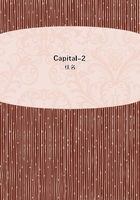
第130章
The essential point in the text is the proof that on the one hand a considerable portion of the industrial capital must always be available in the form of money and that on the other hand a still more considerable portion must temporarily assume the form of money. The proof is, if anything, rendered stronger by these additional remarks of mine. -- F. E. ]
V. THE EFFECT OF A CHANGE OF PRICESWe have on the one hand just assumed unaltered prices and an unaltered scale of production, and a contraction or expansion of the time of circulation on the other. Now let us suppose on the contrary an unaltered period of turnover and an unaltered scale of production, and on the other hand price changes, i.e., rise or fall of prices of raw materials, auxiliary substances, and labour, or of the two first-named elements alone. Take it that the price of raw and auxiliary materials, as well as wages, fall by one half.
In that case the capital to be advanced in our example would be £50instead of £100 per week, and that for the 9-week turnover period would be £450 instead of £900. £450 of the advanced capital-value are eliminated first of all in the form of money-capital, but the process of production continues on the same scale, with the same period of turnover, and with the previous division of the latter. The annual output likewise remains the same but its value has been cut in half. This change, which is accompanied by a change in the supply and demand of money-capital, is brought about neither by an acceleration of the circulation, nor by a change in the quantity of circulating money. On the contrary. A fall by half in the value, or price, of the elements of productive capital would first have the effect of diminishing by half the capital-value to be advanced for the continuation of Business X on the same scale as before, and hence only one half of the money would have to be thrown on the market by Business X, since Business X advances this capital-value first in the form of money, i.e., as money-capital. The amount of money thrown into circulation would decrease because the prices of the elements of production fell. This would be the first effect.
In the second place however one half of the originally advanced capital-value of £900, or £450, which (a) passed successively through the forms of money-capital, productive capital, and commodity-capital, and (b) existed simultaneously and constantly side by side partly in the form of money-capital, partly in that of productive capital, and partly in that of commodity-capital, would be eliminated from the circuit of Business X, and thus come into the money-market as additional money-capital, affecting it as an additional constituent. These released £450 act as money-capital, not because they have become superfluous money for the operation of Business X but because they are a constituent part of the original capital-value, and hence are intended to function further as capital and not to be expended as mere means of circulation. The best method of letting them operate as capital is that of throwing them as money-capital on the money-market.
On the other hand the scale of production (apart from fixed capital) might be doubled. In that case a productive process of double the previous volume would be carried on with the same advanced capital of £900.
If on the other hand the prices of the circulation elements of productive capital were to increase by one half, £1500 instead of £100 or £1,350 instead of £900 would be required per week. It would take an additional capital of £450 to carry on the business on the same scale, and this would exert a pro tanto pressure on the money-market, big or small depending on its condition. If all the capital available on this market were then already engaged, there would be increased competition for available capital. If a portion of it were unemployed, it would pro tanto be called into action.
But, in the third place, given a certain scale of production, the turnover velocity and the prices of the elements of the circulating productive capital remaining the same, the price of the products of Business X may rise or fall. If the price of the commodities supplied by Business X falls, the price of its commodity-capital of £600, which it constantly threw into circulation, drops to, say, £500. Hence one-sixth of the value of the advanced capital does not return from the process of circulation.
(The surplus-value contained in the commodity-capital is not considered here.) It is lost in that process. But since the value, or price, of the elements of production remains the same, this reflux of £500 suffices only to replace 5/6 of the capital of £600 constantly engaged in the process of production. It would therefore required an additional money-capital of £100 to continue production on the same scale.
Vice versa, if the price of the product of Business X were to rise, then the price of the £600 commodity-capital would be increased, say, to £700. One-seventh of this price, or £100, does not originate in the process of production, is not advanced in this process, but derives from the process of circulation. But only £600 are needed to replace the elements of production. Hence, the release of £100.
It does not fall within the scope of the investigation hitherto made to ascertain why, in the first case, the period of turnover is shortened or lengthened, and why in the second case the prices of raw materials and labour, and in the third, the prices of the products supplied, rise or fall.
But the following does belong in it:
First case: Unchanged Scale of Production, Unchanged Prices of the Elements of Production and of Products, and a Change in the Period of Circulation and Thus of Turnover.